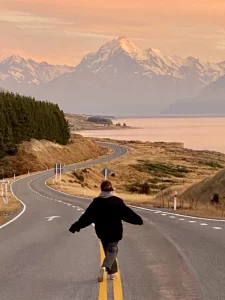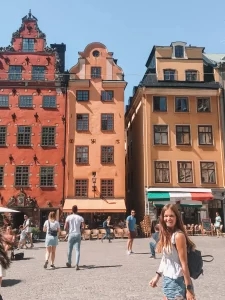Bosnia and Herzegovina is a country with a particularly unique blend of cultures. Despite its somewhat recent history of war and political unrest, the country is now safe for tourists and still relatively undiscovered by Americans. Mostar is one of Bosnia’s most beautiful and scenic cities. Read on for a list of 9 unmissable things to do in Mostar to help you plan your next visit!
Disclosure: Some of the links below are affiliate links. When you purchase through links on my site, I may make a small commission (at no extra cost to you!).
Mostar history & background
A little bit of background information is important to get the full picture!
The city of Mostar was founded in 1452, although there is evidence of it being inhabited for centuries before that. Since then, the region has subsequently been ruled by the Ottoman Empire, Austria-Hungary, Yugoslavia, and Nazi Germany (to name a few). Each new ruling party brought with it new languages, customs, religions, and ways of life. Over the years, the city of Mostar became a melting pot of cultures. Nowadays, Bosniaks, Croats, and Serbs make up the majority of the population.
In the early ’90s, the Bosnian War (and the Croat-Bosniak War, the “war within a war”) tore up Mostar. Apart from the physical destruction, the conflicts also ended up dividing the city ethnically — a Croat-majority on the west bank of the Neretva River and a Bosniak-majority on the east bank. Since the end of the war in 1995, there have been great efforts put in to rebuild and reunify the city. The physical remnants of the war are still visible almost everywhere you go, however.
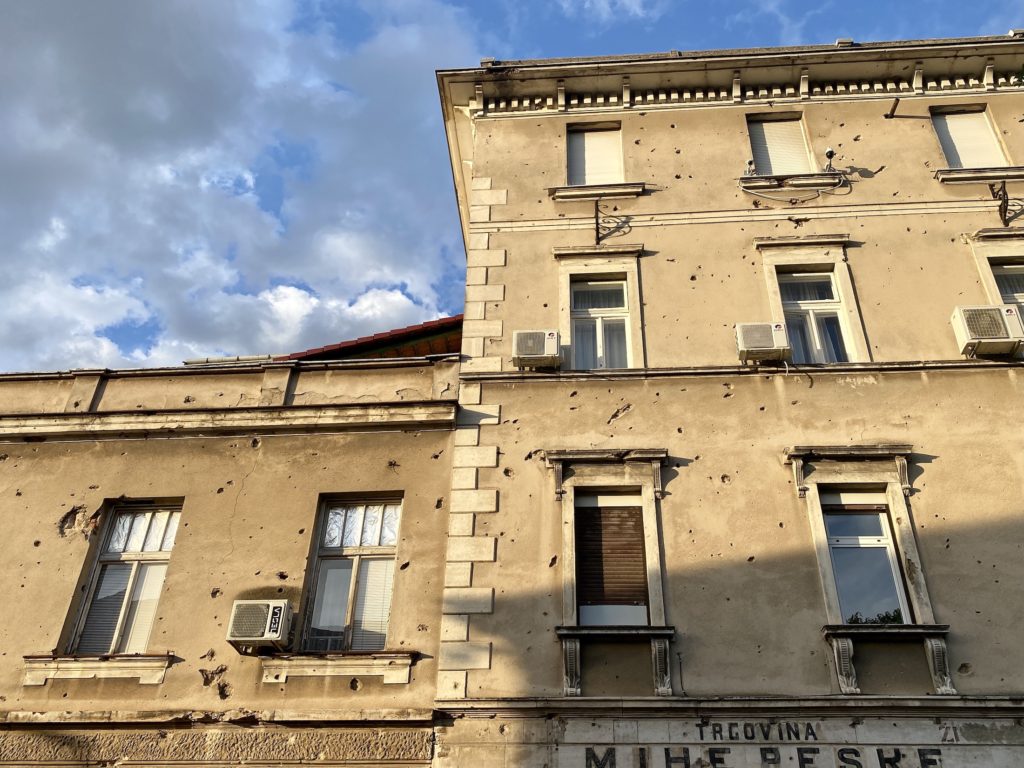
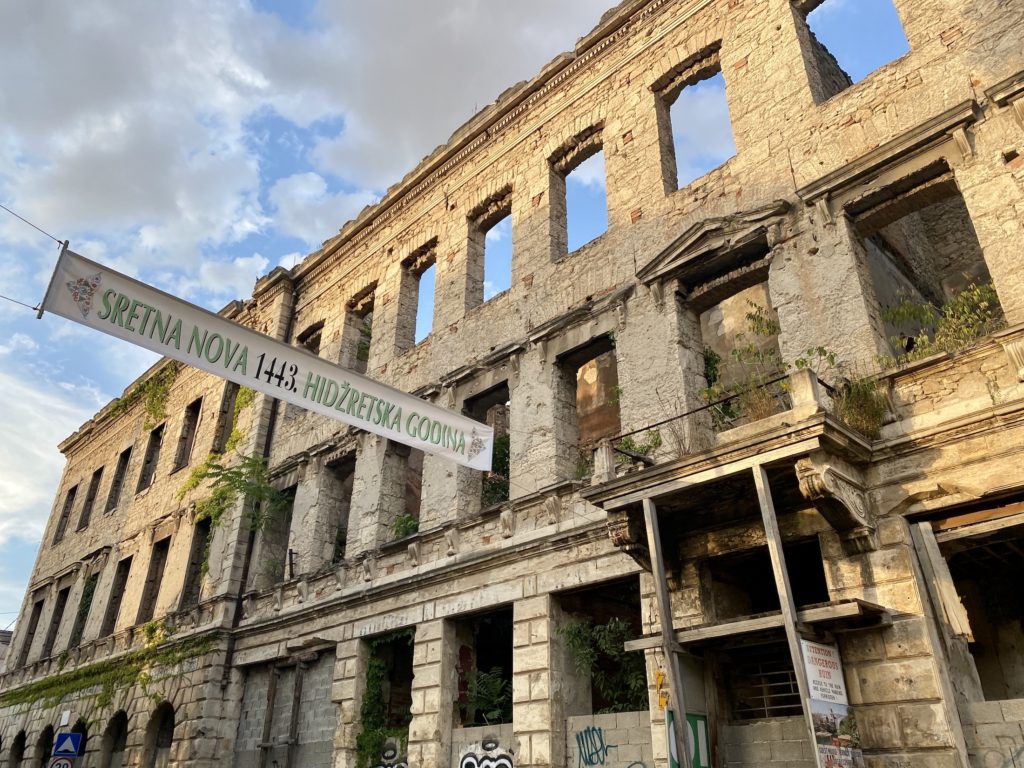
How to get to Mostar
The closest airport to the city is Mostar Airport (OMO). Generally, it would be possible to fly here from several European cities. Since the pandemic, though, there are no passenger flights currently running. Your best option in the meantime would be to fly into Sarajevo Airport (SJJ), which is 42.5 miles (68.5 km) away. From there, you could either drive or take public transit.
Driving to Mostar is definitely possible but can be tricky if you’re staying near the Old Town. Roads are narrow, Google and Apple Maps had incorrect information, and parking can be scarce. Make sure that your accommodation provides a parking spot before driving in.
Driving times from:
- Sarajevo: 2 hours
- Split, Croatia: 2 hours 15 minutes
- Dubrovnik, Croatia: 2 hours 40 minutes
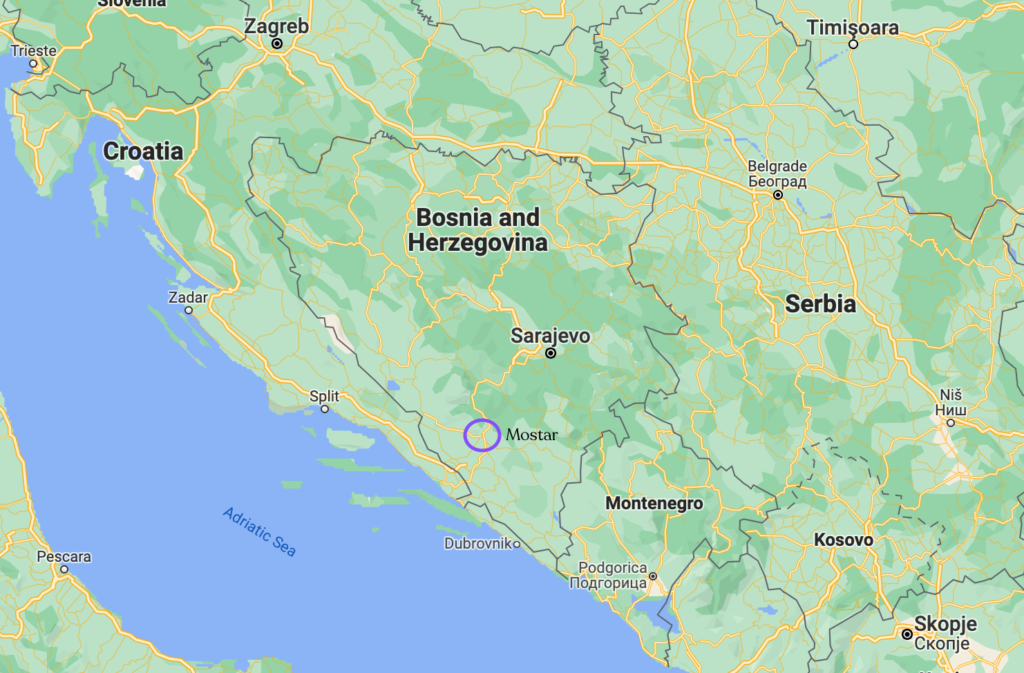
Things to do in Mostar
Stari Most
Stari Most, or Old Bridge, is Mostar’s most iconic attraction and what connects the two halves of the city. If you’ve been to Mostar, you definitely will have seen the Old Bridge!
Built by the Ottoman Empire in 1566, Stari Most stood for hundreds of years before being destroyed in the Croat-Bosniak War in 1993. The bridge was rebuilt in 2004 and is now listed as a UNESCO World Heritage Site. It stands 65.6 ft (20 m) tall and people regularly jump off of it as entertainment (see below).
Make sure to grab some lunch or dinner at one of the restaurants overlooking the river near the bridge. There are many options to choose from that serve classic Bosnian dishes at reasonable prices, and the view is unbeatable!
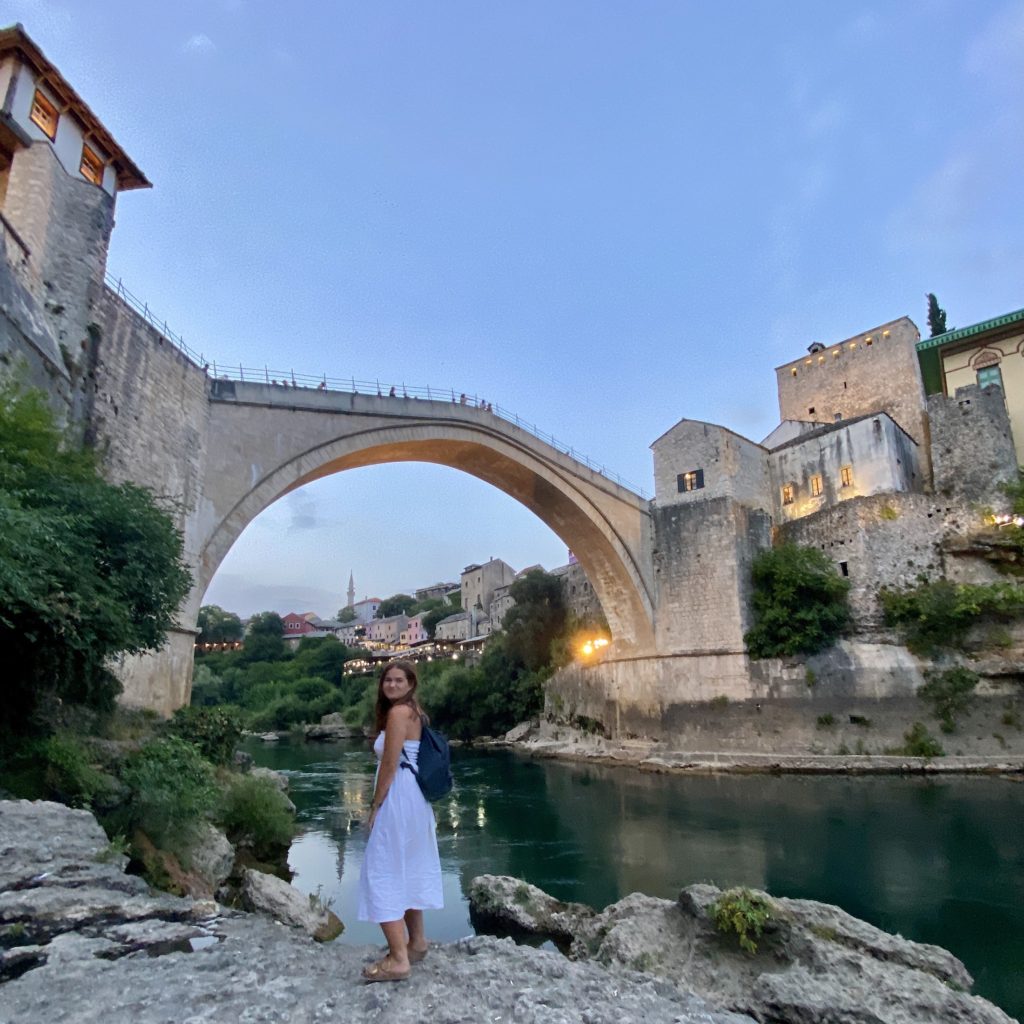
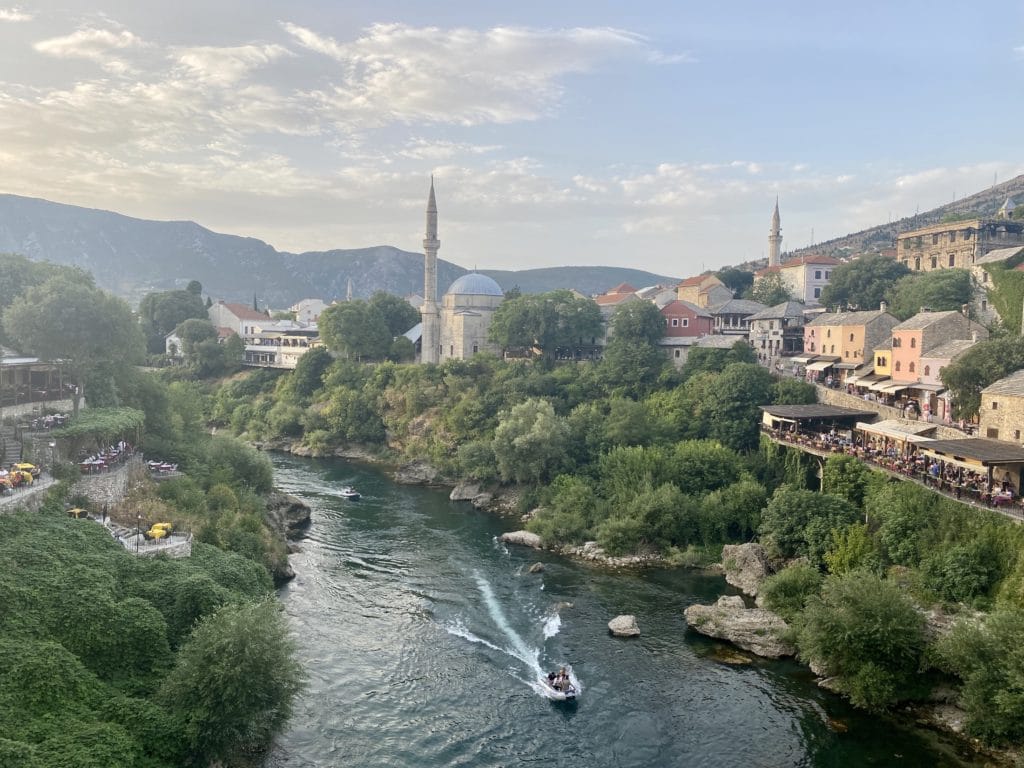
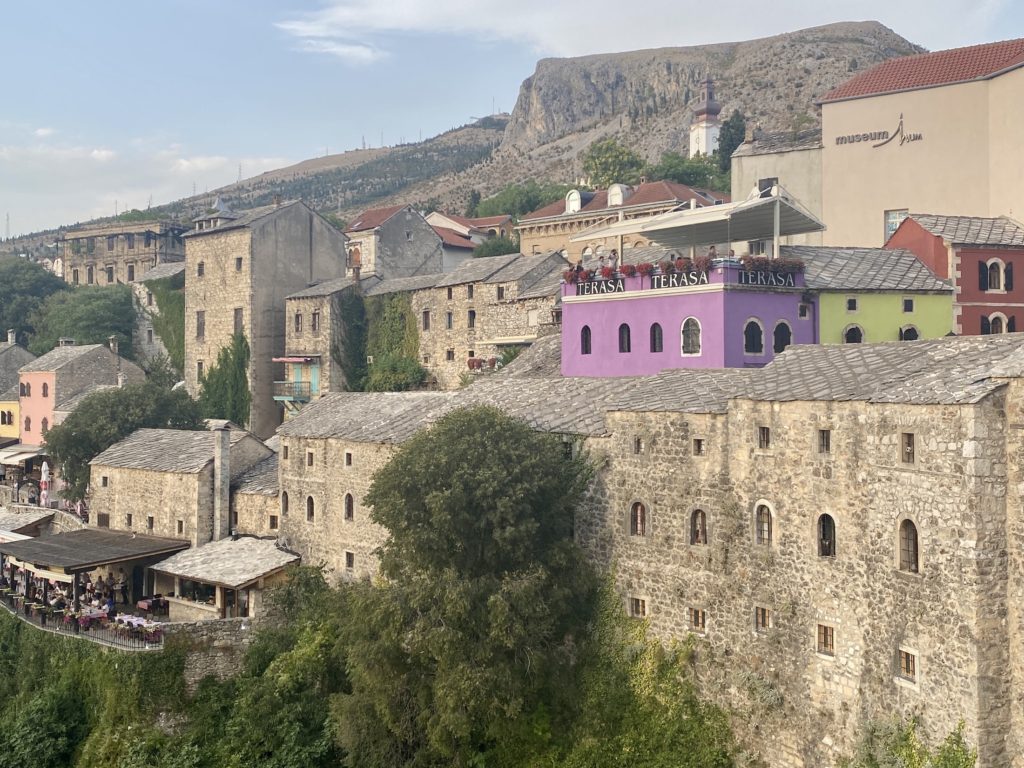
Watch a bridge jump
Most evenings, you can find a group of men soliciting donations from passersby on the Old Bridge. They often walk along the railings and lean off the edge to drum up hype for the main act: a diver that jumps from the highest point of the bridge into the cold river below. Bridge jumping is a rite of passage for young men in Mostar and is definitely something to check out if you get the chance.
Supposedly, anybody can jump off of the bridge if you ask one of the performers to teach you how. I can’t vouch for the legitimacy of that claim, though, because I would never in a million years try.
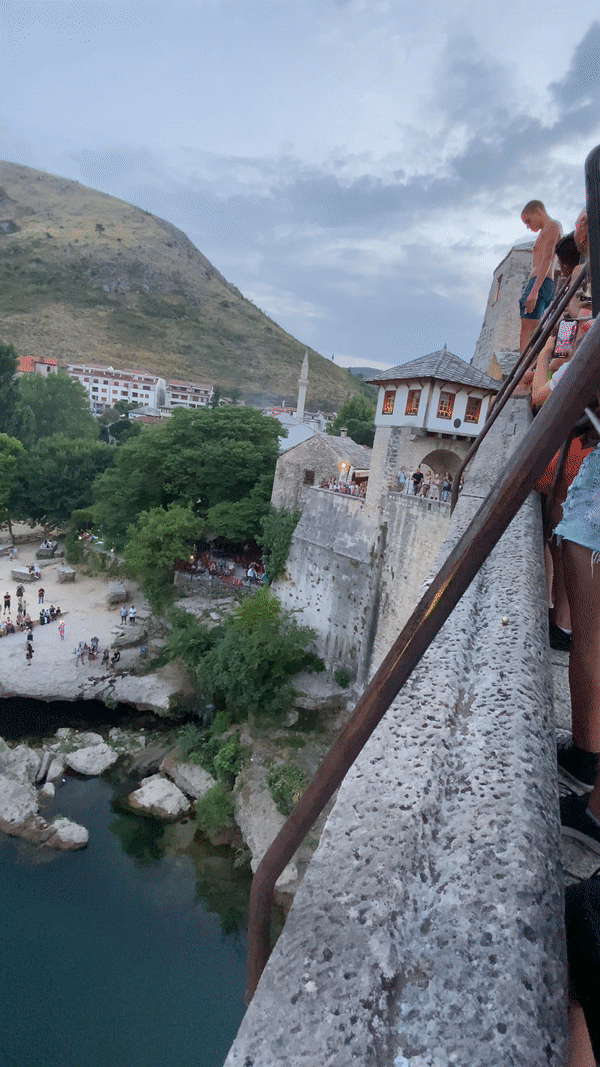
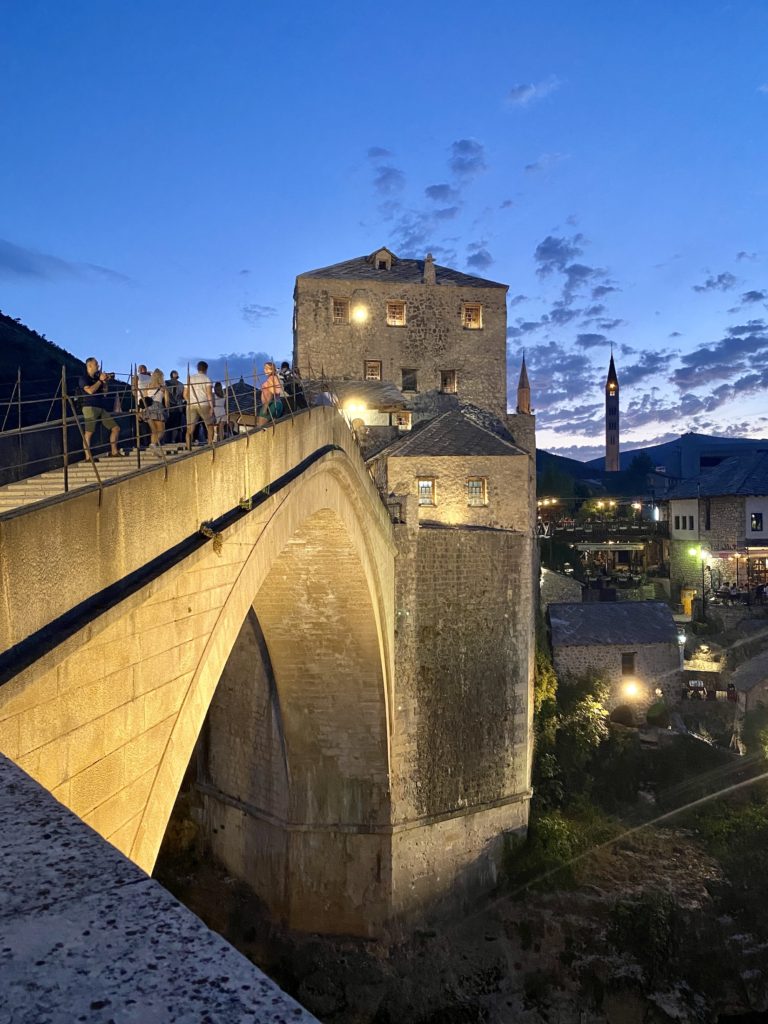
Mostar Old Town
Stepping into Mostar’s Old Town is like stepping back in time. The narrow, rocky streets are lined with shops selling trinkets and handmade goods. You’ll also find lots of restaurants, bars, and cafes with outdoor seating for people watching.
The Ottoman Empire’s influence in particular is super apparent in the Old Town. Stray cats, Turkish coffee sets, and street-side kebab shops make Mostar the most similar European city to Istanbul that I’ve ever seen. Add in the views of mosque minarets in the distance and you would be forgiven for thinking you were in Turkey.

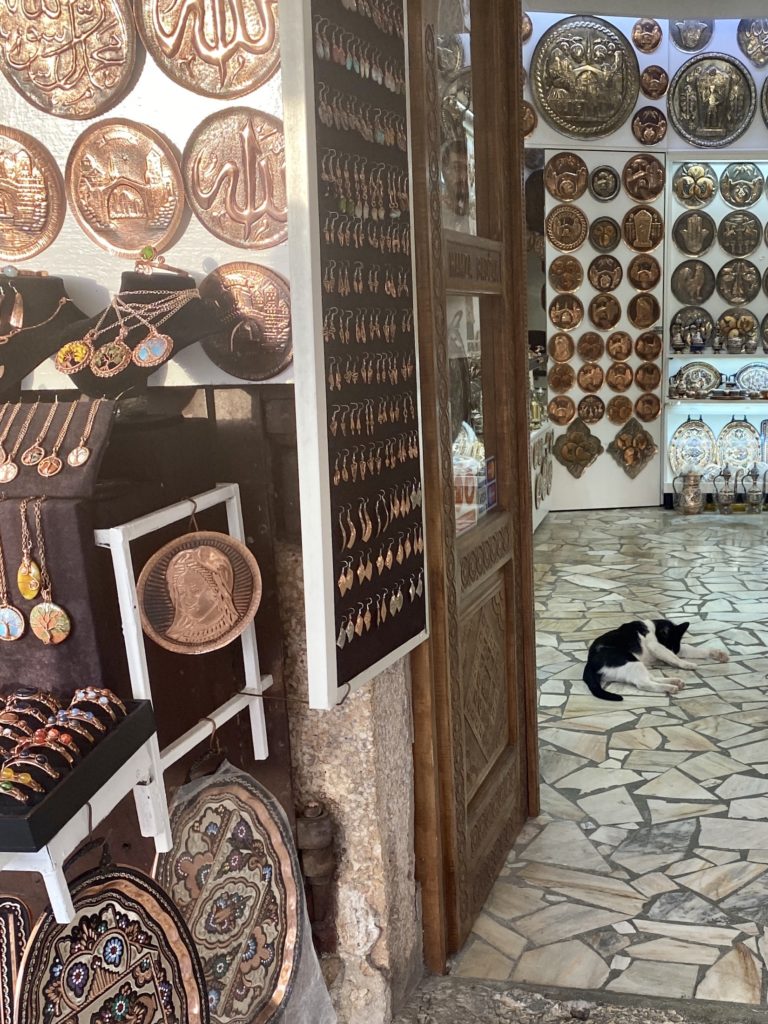
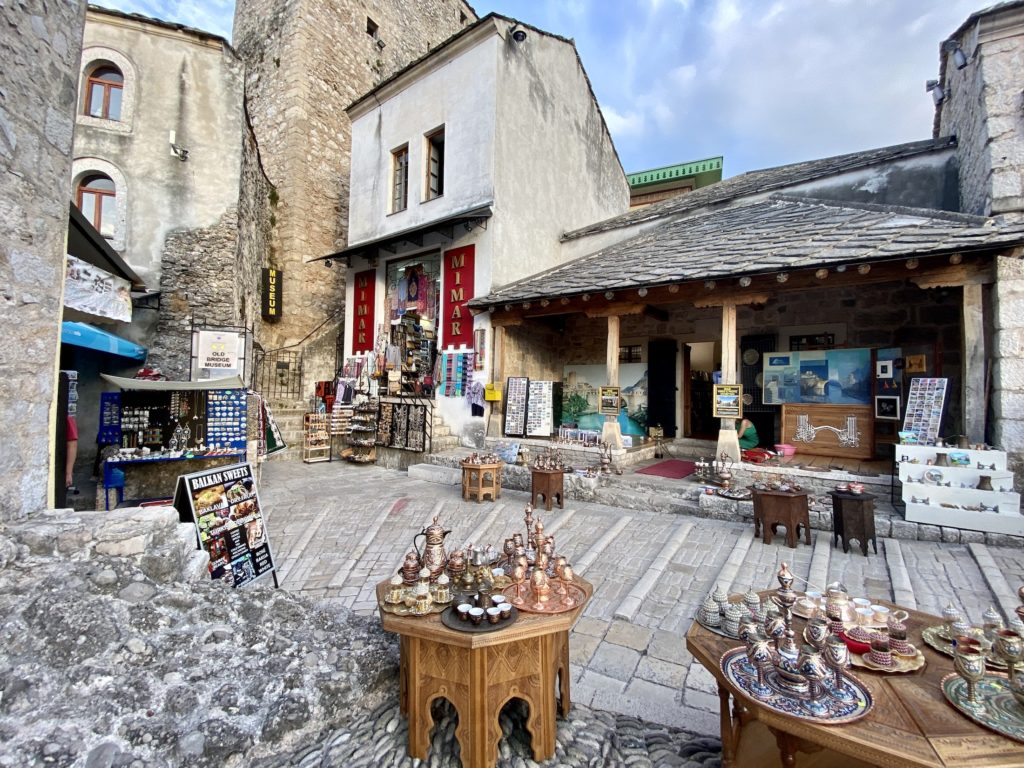

Koski Mehmed Paša Mosque
Koski Mehmed Paša is the second-largest mosque in Mostar. Built in the 17th century, the mosque is now open to tourists after being damaged during the war. You can stroll through the surrounding courtyards and climb to the top of the minaret for sweeping views of the city. Admission to both are free!
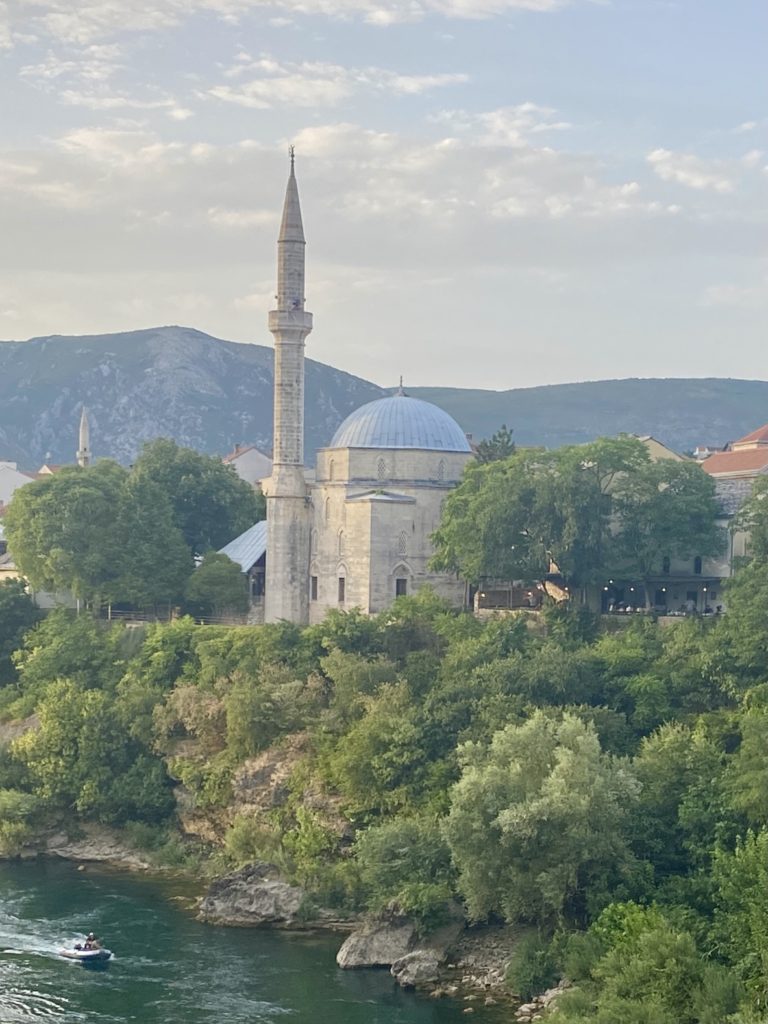
Museum of War and Genocide Victims 1992-1995
This museum is dedicated to preserving the memory of those who died in the Bosnian War. Inside, you’ll find personal artifacts, photographs, and accounts of what life was like in the area at the time. The museum also teaches about the true realities of war, including descriptions of concentration camps and genocide.
Unfortunately for us, the museum was closed both times we tried to visit (despite the sign out front saying it should be open). After researching a bit online, it seems that this is a common complaint. I would recommend buying tickets in person instead of online to avoid disappointment.
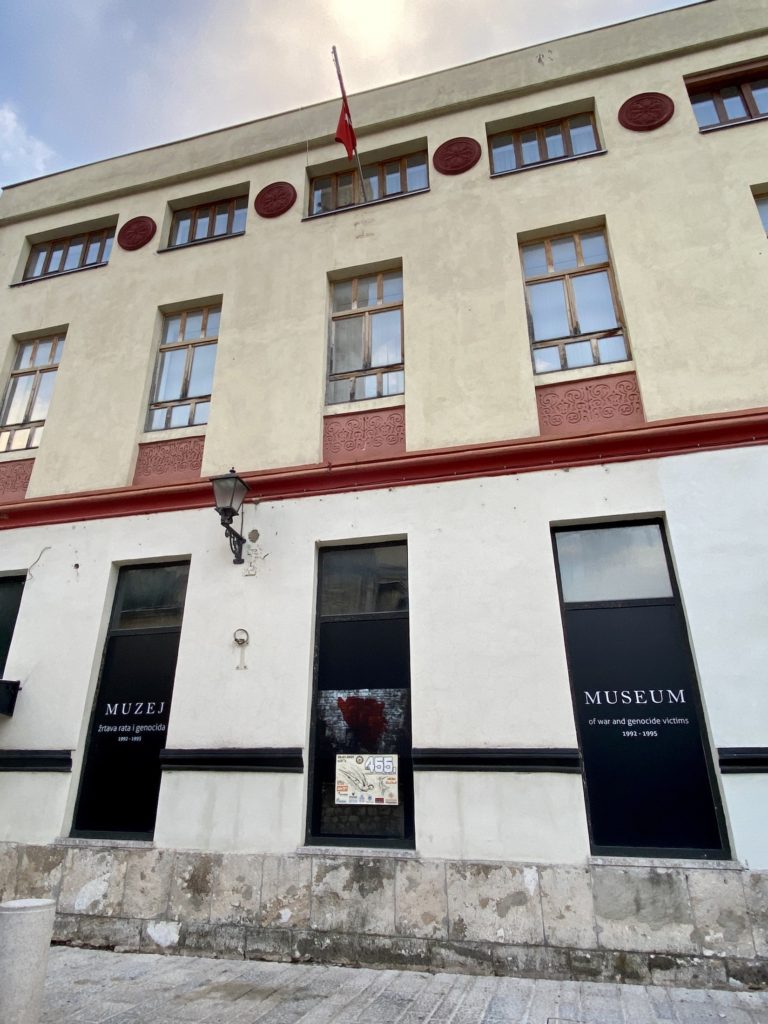
Karađoz Beg Mosque
Right across from the Museum of War and Genocide Victims, you’ll find Karađoz Beg Mosque. Built in the 16th century on the foundation of a Catholic church, the mosque is one of the largest in the region. Along with many other buildings in Mostar, Karađoz Beg Mosque was nearly destroyed and later rebuilt after the war. During your visit, you can walk around the adjacent cemetery and to the top of the minaret. There is a small fee of 5 marks ($3 USD) to go inside the mosque.
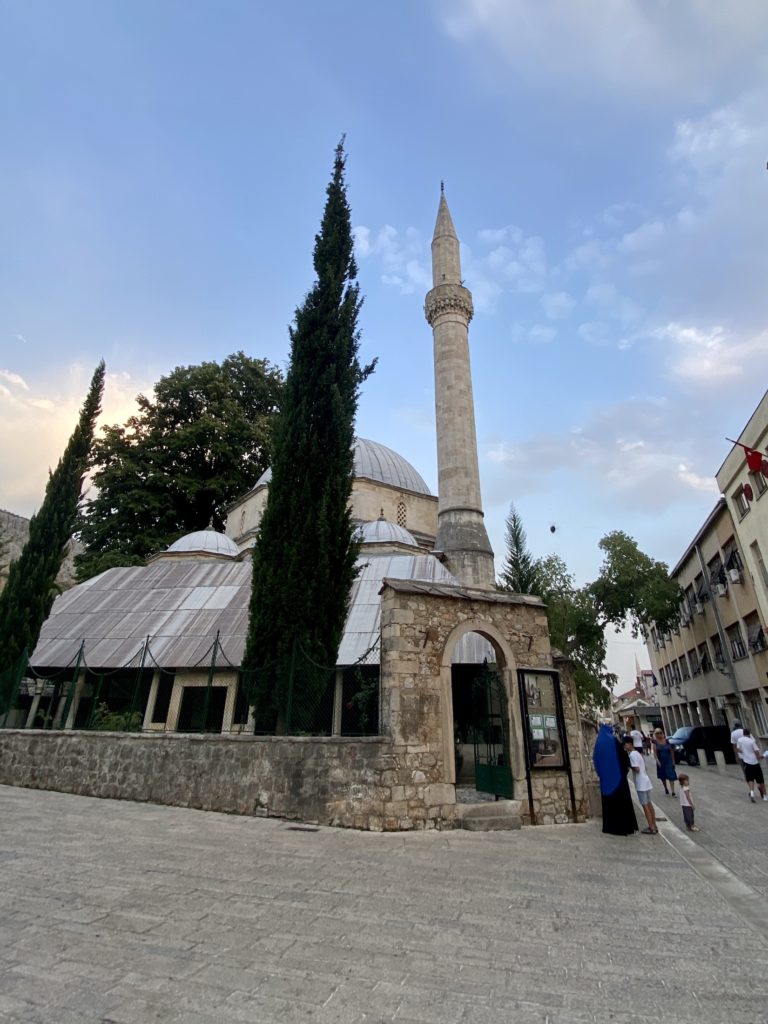
Kriva Cuprija
Kriva Cuprija, or Crooked Bridge, is a 16th-century bridge that crosses Rabobolja Creek. It’s basically a miniature version of the Stari Most with its steep halfway point and semi-circular arch. Like the Old Bridge, the original Crooked Bridge was also destroyed — this time, however, by floods in the year 2000.
The area around the Crooked Bridge is filled with tons of terraced restaurants with outdoor seating. It’s a good place to come if you’re looking for a more relaxed atmosphere than the hustle and bustle of the Old Town.
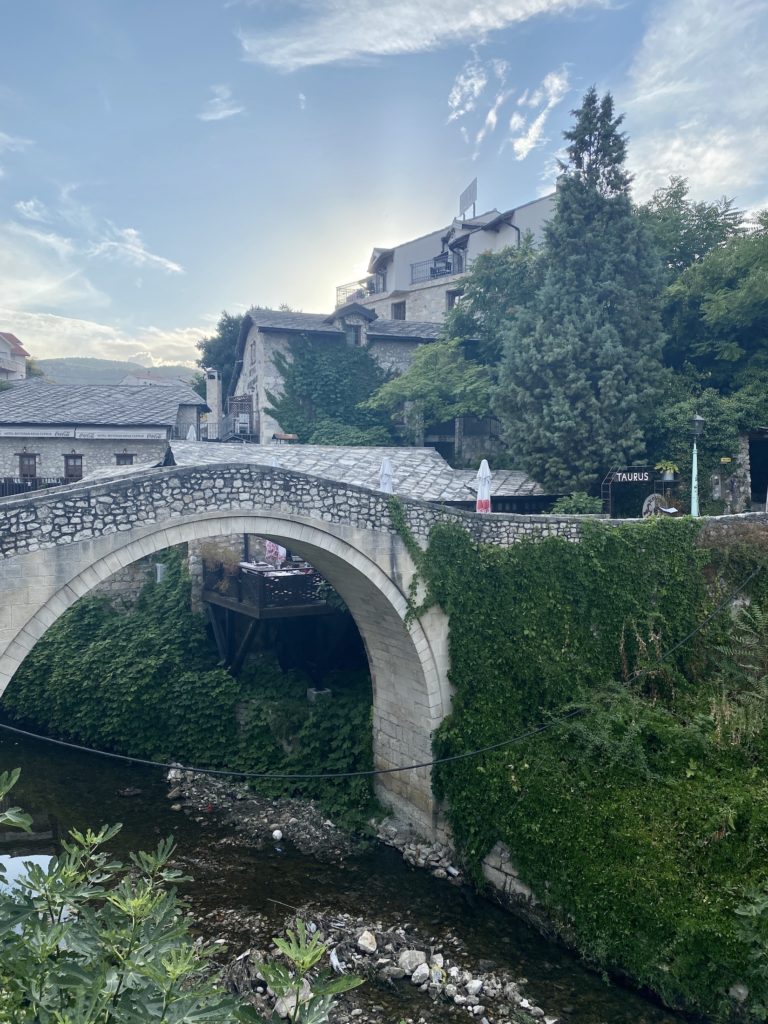
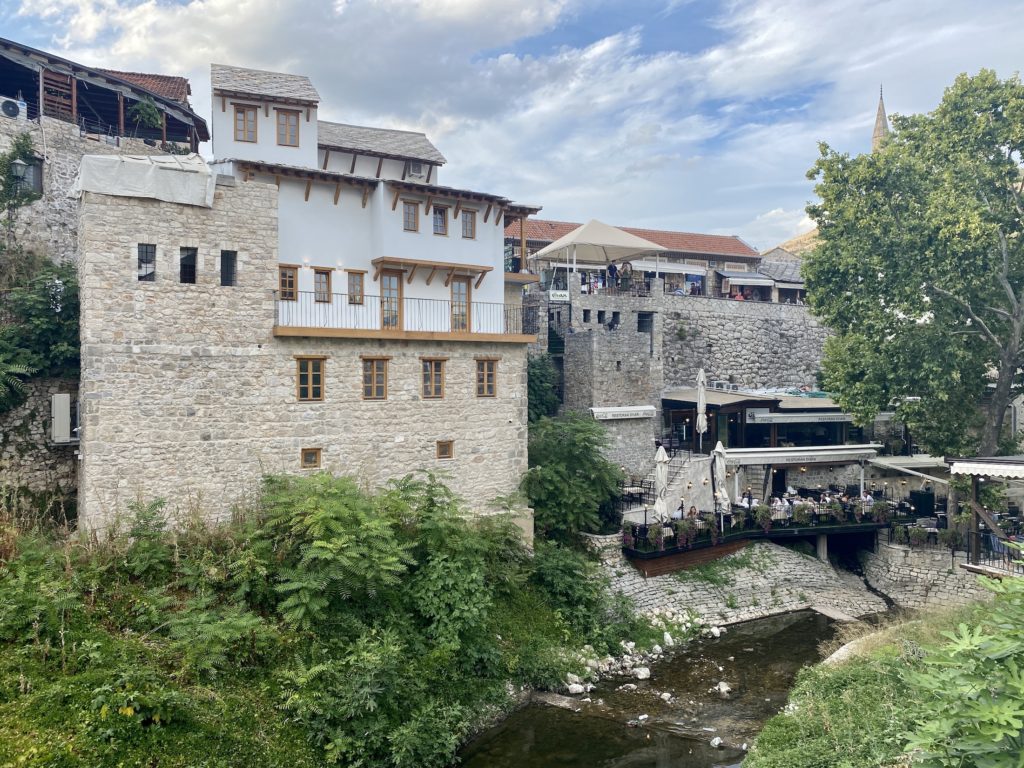
View from Lučki Most
The third and final bridge on our list of things to do in Mostar is the Lučki Most. The bridge itself isn’t the most appealing — it’s the view from it that we’re after. From here, you get the best view of Stari Most, the Neretva River, and Mostar’s Old Town. Come at dusk for the best lighting (and check out the nearby Pekara Lučki Most afterward for a delicious cheese burek!).
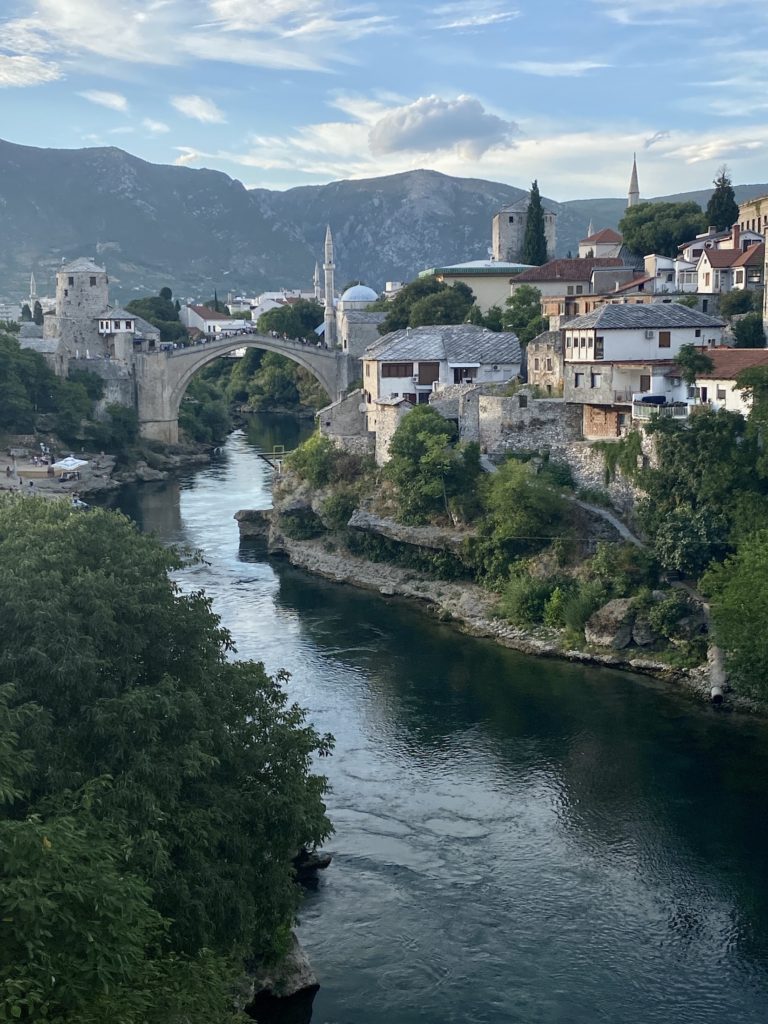
Kriz na Humu lookout point
The Cross on the Hum, also known as the Millennium Cross, is a Roman Catholic cross that serves as a lookout point and pilgrimage site. At 108 ft (33 m) high, the cross is the highest in all of Bosnia & Herzegovina (the height was purposefully chosen because Jesus Christ was 33 years old at the time of his crucifixion).
To get to the cross, you can either take a taxi from town or hike up. If you decide to walk, make sure to stay on the marked road. There are still many landmines left over from the war that can pose a threat if you come across them.
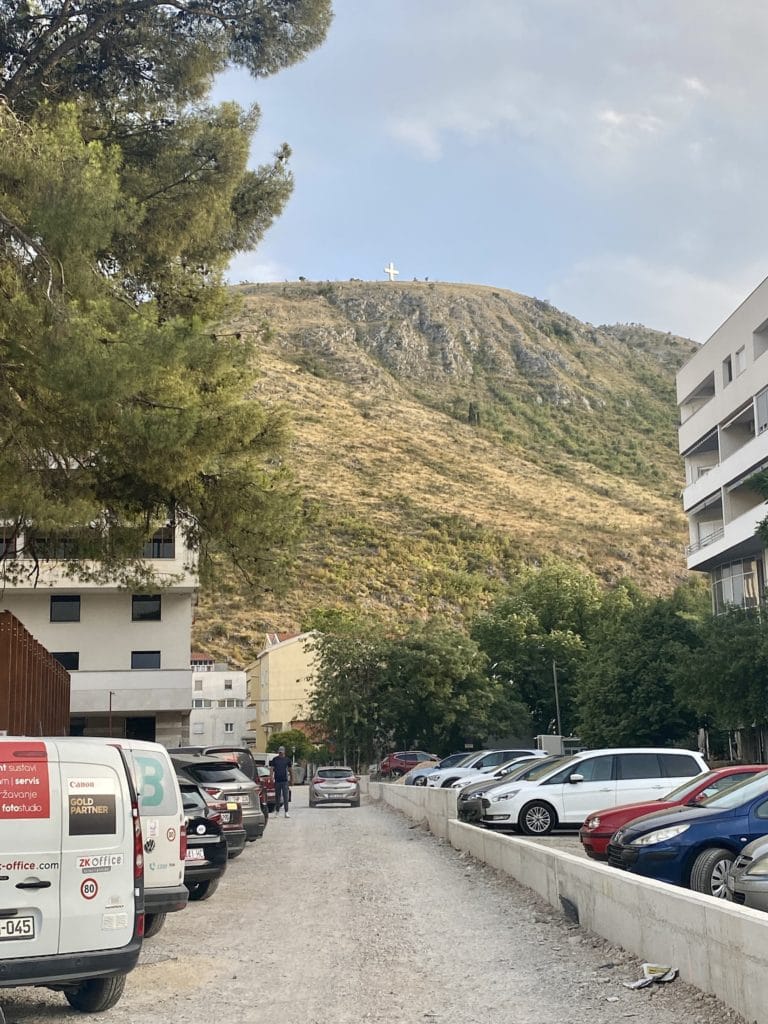
Day trips from Mostar
Blagaj Tekija
Twenty minutes outside of Mostar, you’ll find the Blagaj Tekija (also known as the Dervish House). This historic Sufi monastery is built into the cliffside and sits along the clear waters of the Buna spring. The inside of the building now serves as a museum and cafe in addition to holding services regularly. Along the water, you’ll also find a few restaurants to sit and enjoy the tranquility.
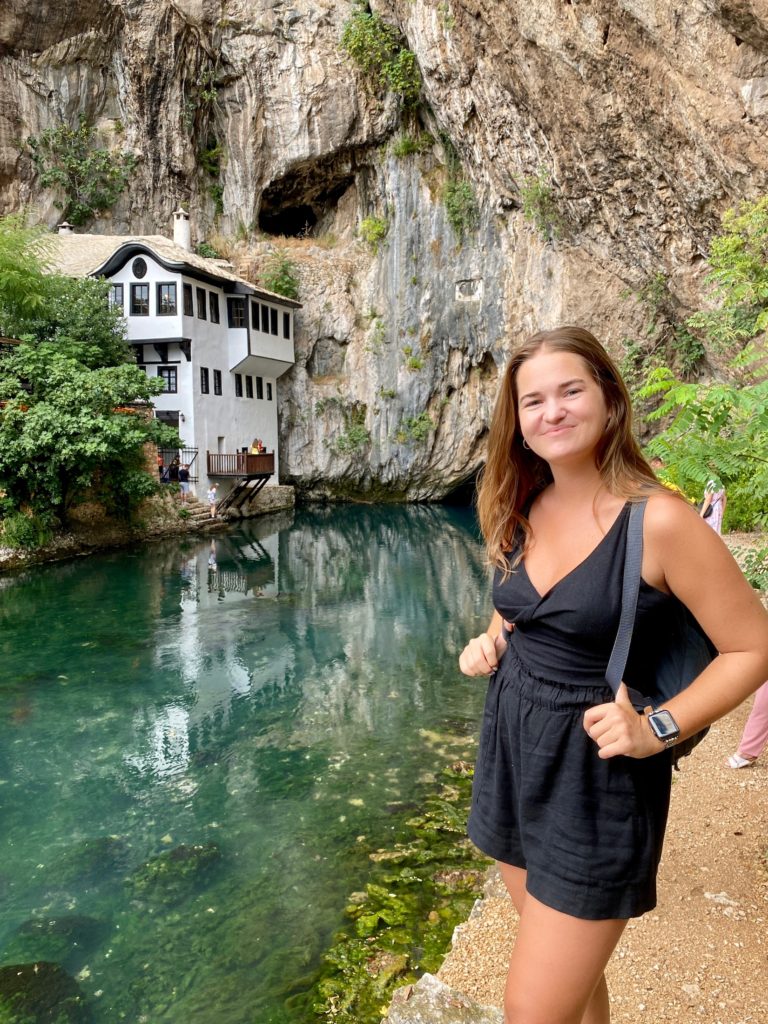
Kravice Waterfalls
Just 50 minutes away from Mostar, the Kravice Waterfalls are an oasis that feels worlds away. A short walk down from the parking lot will lead you to a large lake with multiple cascades surrounding it. The best part of visiting Kravice is the fact that swimming is allowed right up to the falls! This is a great spot to visit during the hot summer months — cooling down underneath a waterfall is second to none.
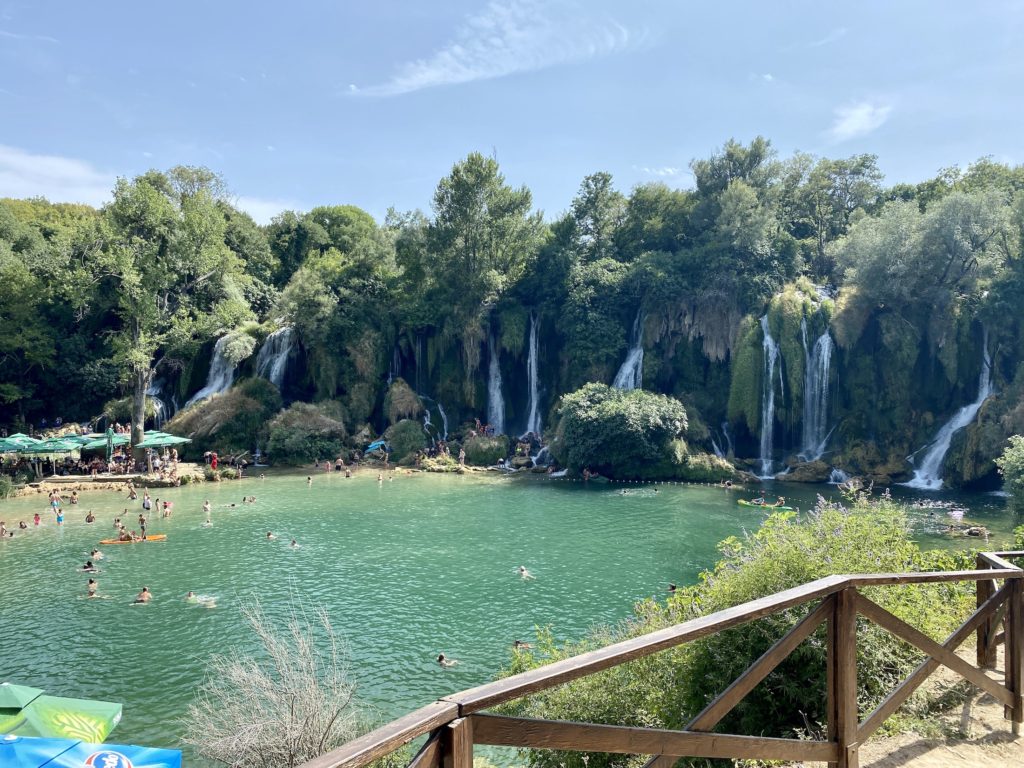
Book a tour in Mostar
Thanks for reading this Mostar travel guide! I hope it’s inspired you to visit Bosnia and Herzegovina sometime in the future. For more of our Balkans road trip, check out my Croatia tag!
xoxo Niki
